18th Century Gilt brass and Silver Pocket or Miniature sundial compass with Case
Sold
Request Information
Follow Us
18th Century Gilt brass and Silver Pocket or Miniature sundial compass with Case
A FINE 18TH CENTURY GILT BRASS AND SILVER POCKET SUNDIAL WITH TRAVELLING CASE, c. 1750.
A richly engraved gilt brass and silver German equinoctial sundial, monogrammed on the back IGV (for Johann Georg Vogler). The octagonal gilt brass base has a glazed silver compass rose showing a magnetic variation of a few degrees west. The base plate, resting on the bottom of the compass box, has a hinged chapter ring with a collapsible gnomon. There is a silver sectorial scale (0-80°) to set the local latitude by moving the chapter ring up or down. The chapter ring runs from III to IX, roughly the hours of daylight in summer. The time is indicated by the shadow of the gnomon on the chapter ring.
The sundial comes with its original cardboard and leather travelling case.
The maker, Johann Georg Vogler, brother of Andreas Vogler, also a sundial maker, was born in Unterthingau in South Bavaria (not far from the Austrian border) in 1720 and moved to Augsburg for work. He worked in a sawmill and made sundials next to his regular job. He died in 1745
Condition
Good. Wear consistent with age and use. Superb original condition with beautiful oxidised surfaces.
Dimensions
Height: 1.97 in. (5 cm)
Width: 1.97 in. (5 cm)
Depth: 0.48 in. (1.2 cm)
Literature
J. Abeler, Meister der Uhrmacherkunst, Wuppertal, 2010, p., 1972, p. 575.
PREVIOUSLY SOLD
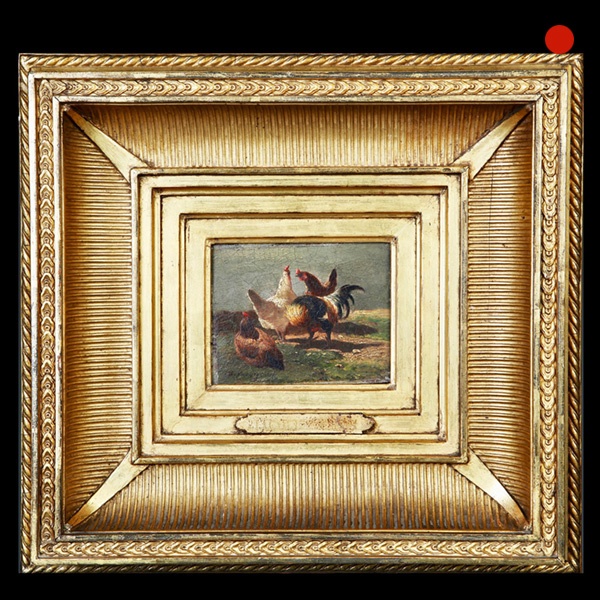
19th-Century Study of a Cockerel and Three Hens Oil Painting on Walnut Panel Charles Emile Jacque (1813-1894)
19th-Century Study of a Cockerel and Three Hens Oil Painting on Walnut Panel Charles Emile Jacque (1813-1894) 1813 to 1894 England SOLDFollow Us19th-Century Study of a Cockerel and Three Hens Oil Painting on Walnut Panel Charles Emile Jacque...
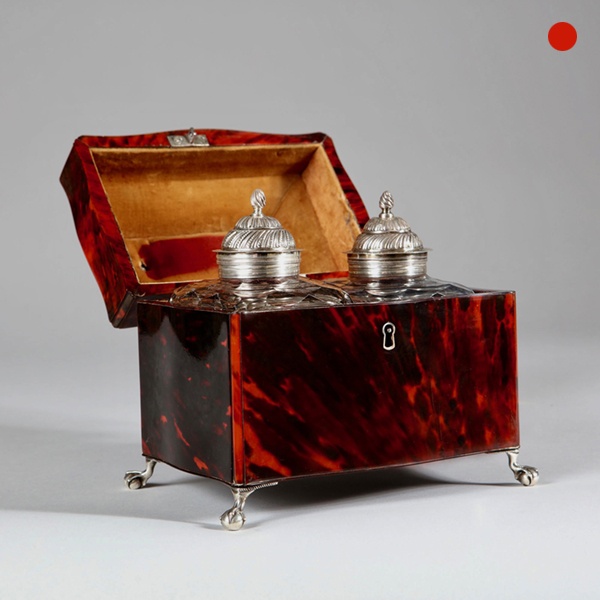
George III Red Tortoiseshell Tea Caddy
A rare exquisitely shaped red tortoiseshell tea caddy, serpentine to all four faces with a pagoda top. The beautifully worked silver handle depicts the Prince of Wales feathers and it is raised on fine ball and claw feet of silver.
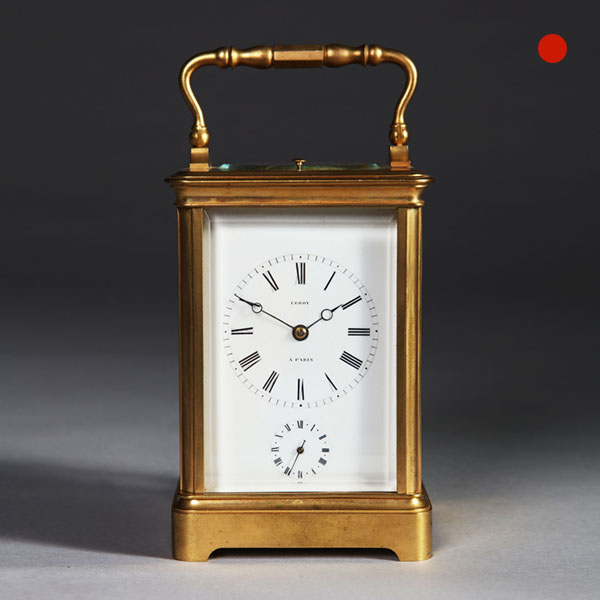
19th-Century Quarter-striking Carriage Clock by Leroy, Paris
The gilt-brass, so-called corniche case has bevelled glass panels on all sides so that the movement is entirely visible. It is surmounted by a shaped carrying handle. The white enamel dial has a Roman chapter ring, with Arabic five-minute and minute divisions.
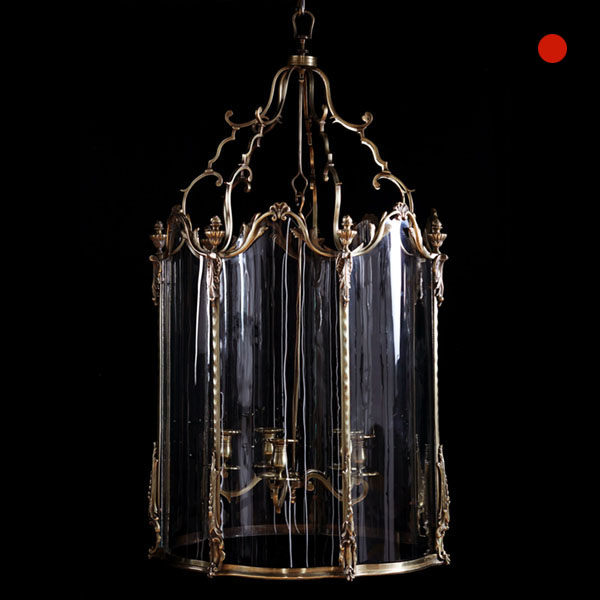
Louis XV Style French Lantern
A superb large French brass lantern of Louis XV style, 19th century. The five light chandelier within a cylindrical lantern cast with scrolling acanthus, shells and vase-shaped finials with serpentine glazed panels, fitted for electricity.
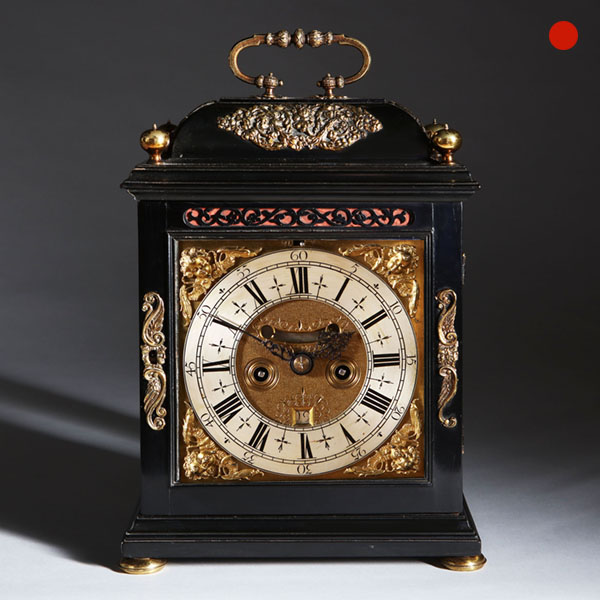
William and Mary Ebony Veneered Bracket Clock by Johnathan Lowndes
The ebony-veneered case has a so-called domed top, a design which became popular in the Charles II period (from 1675 onwards). The case is adorned with repousse brass ornaments and rests on gilt-brass bun feet. It is surmounted by a brass carrying handle of typical shape.
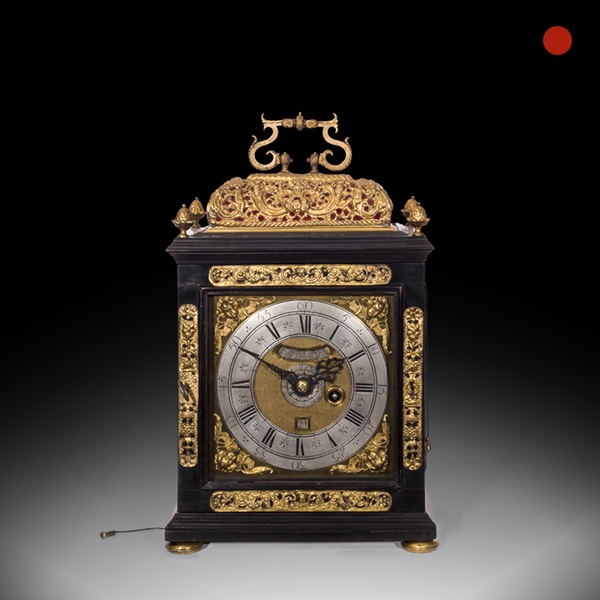
17th-Century Ebony Veneered Table Clock with Alarm and Pull Quarter Repeat
A magnificent sprung driven table clock by respected London maker George Etherington. The late 17th century, ebony- veneered table clock with alarm and pull quarter repeat on two bells, signed on the chapter ring Etherington London, and on the backplate Geo Etherington LONDON, c. 1695-1700.

19th-Century Study of a Cockerel and Three Hens Oil Painting on Walnut Panel Charles Emile Jacque (1813-1894)
19th-Century Study of a Cockerel and Three Hens Oil Painting on Walnut Panel Charles Emile Jacque (1813-1894) 1813 to 1894 England SOLDFollow Us19th-Century Study of a Cockerel and Three Hens Oil Painting on Walnut Panel Charles Emile Jacque...

George III Red Tortoiseshell Tea Caddy
A rare exquisitely shaped red tortoiseshell tea caddy, serpentine to all four faces with a pagoda top. The beautifully worked silver handle depicts the Prince of Wales feathers and it is raised on fine ball and claw feet of silver.

19th-Century Quarter-striking Carriage Clock by Leroy, Paris
The gilt-brass, so-called corniche case has bevelled glass panels on all sides so that the movement is entirely visible. It is surmounted by a shaped carrying handle. The white enamel dial has a Roman chapter ring, with Arabic five-minute and minute divisions.

Louis XV Style French Lantern
A superb large French brass lantern of Louis XV style, 19th century. The five light chandelier within a cylindrical lantern cast with scrolling acanthus, shells and vase-shaped finials with serpentine glazed panels, fitted for electricity.

William and Mary Ebony Veneered Bracket Clock by Johnathan Lowndes
The ebony-veneered case has a so-called domed top, a design which became popular in the Charles II period (from 1675 onwards). The case is adorned with repousse brass ornaments and rests on gilt-brass bun feet. It is surmounted by a brass carrying handle of typical shape.

17th-Century Ebony Veneered Table Clock with Alarm and Pull Quarter Repeat
A magnificent sprung driven table clock by respected London maker George Etherington. The late 17th century, ebony- veneered table clock with alarm and pull quarter repeat on two bells, signed on the chapter ring Etherington London, and on the backplate Geo Etherington LONDON, c. 1695-1700.
YOU MAY ALSO LIKE
No Results Found
The page you requested could not be found. Try refining your search, or use the navigation above to locate the post.
No Results Found
The page you requested could not be found. Try refining your search, or use the navigation above to locate the post.



















